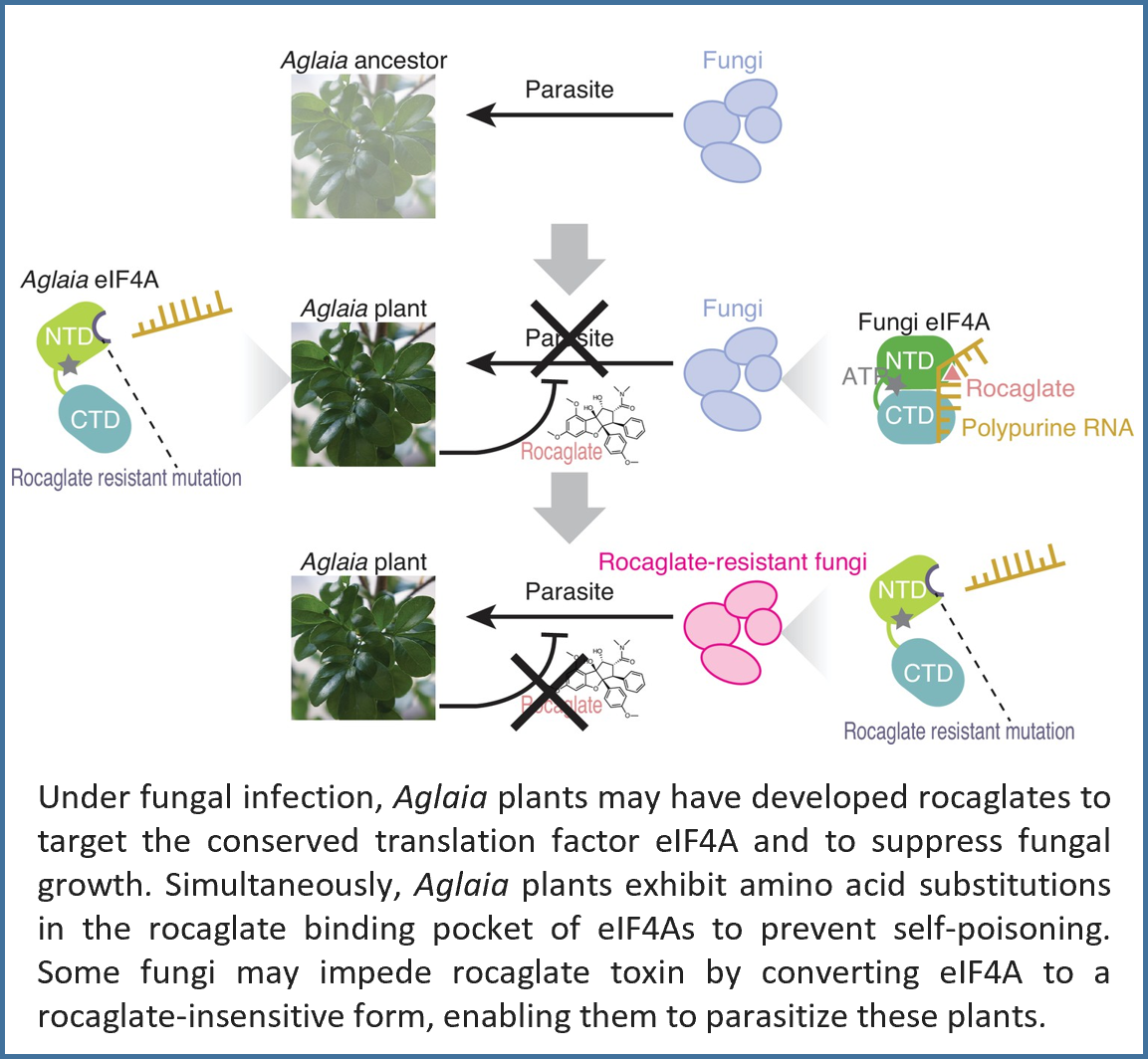- TEL:
- +81-3-5462-4831
- FAX:
- +81-3-5462-4835
※9:00-17:40 Mon.-Fri. (JST)



Mingming Chen, Naoyoshi Kumakura, Hironori Saito, Ryan Muller, Madoka Nishimoto, Mari Mito, Pamela Gan, Nicholas T Ingolia, Ken Shirasu,
Takuhiro Ito, Yuichi Shichino and Shintaro Iwasaki eLife 12:e81302 (2023)
https://doi.org/10.7554/eLife.81302
Copyright © Authors 2023
This article is licensed under a Creative Commons Attribution 4.0 International License (CC BY).
Plant-fungus interactions have been extensively studied because fungi infecting plants cause severe crop losses. Plants produce secondary metabolites (such as tannins, terpenoids, saponins, alkaloids, flavonoids, etc.) that can kill fungi as a defense mechanism, while some fungi can detoxify antifungal compounds by secreting certain enzymes. However, little is known about the diversity of mechanisms of plant-fungus competition.
|
A species of fungus, Ophiocordyceps sp. that is able to grow on Aglaia sp. plants despite their production of rocaglates, which are inhibitors of the translation initiation factor (eIF4A), is identified. An amino acid substitution encoded in the fungal eIF4A gene was identified so that rocaglates cannot bind to eIF4A thus preserves eIF4A activity in fungus. This bypass mechanism is similar to the way in which the plant itself bypasses. These results indicate fungal resistance to plant secondary metabolites independent of detoxification enzymes and a unique contest between plants and fungi centered on secondary metabolites synthesized in the host plant. Use of PROTEOSAVE™ in this studyPROTEOSAVE™ 50mL tube was used for conidia culture
|
【Fig.5】
|
Nakamura I, Ohsumi K, Takeda S, Katsumata K, Matsumoto SAkamatsu SMitori H, Nakai T. 2019.
ASP2397 Is a Novel Natural Compound That Exhibits Rapid and Potent Fungicidal Activity against Aspergillus Species through a Specific Transporter. Antimicrob Agents Chemother 63:10.1128/aac.02689-18.
https://doi.org/10.1128/aac.02689-18
ProteoSaveTM SS Plate 96F was used in time-kill curve assays to test fungicidal activity.
| Cat # | Product name | Material | sterilization method | Package |
|---|---|---|---|---|
| MS-52550Z | PROTEOSAVE™ tube |
Body: polypropylene Lid: polyethylene |
Radiation sterilization | 5 tube/packaging 100 tubes/case |
Remark